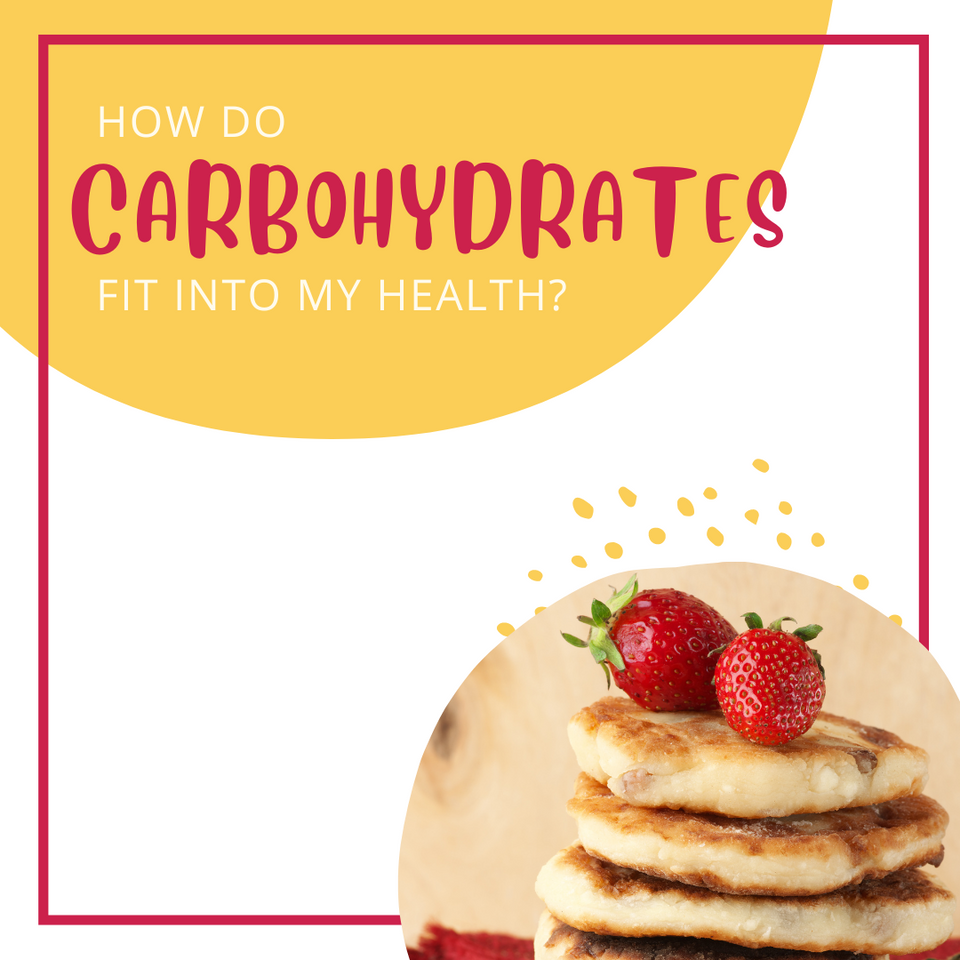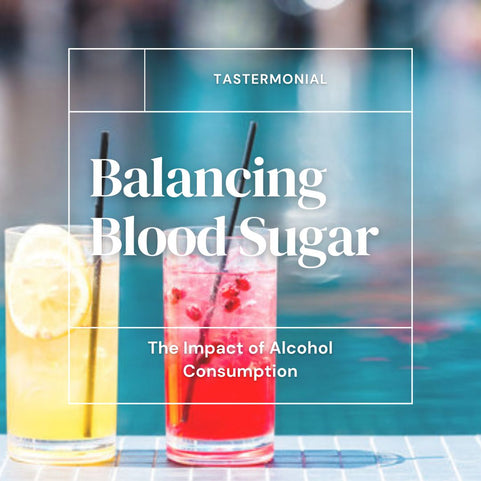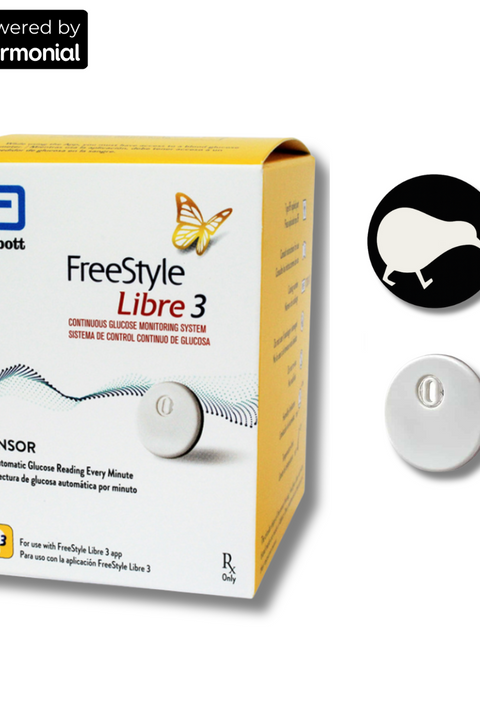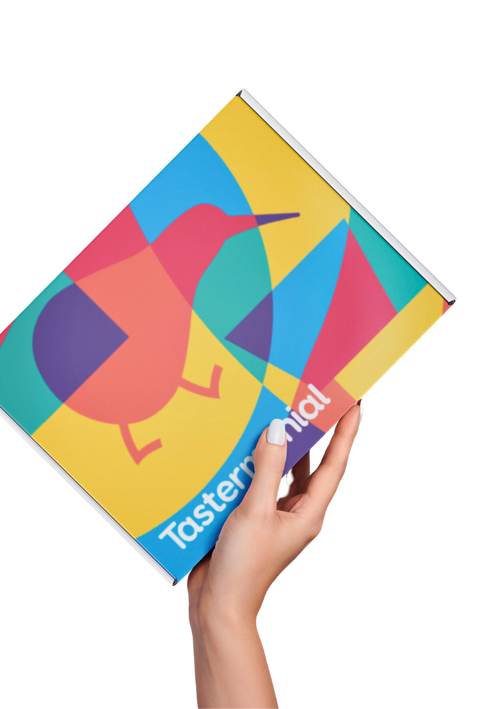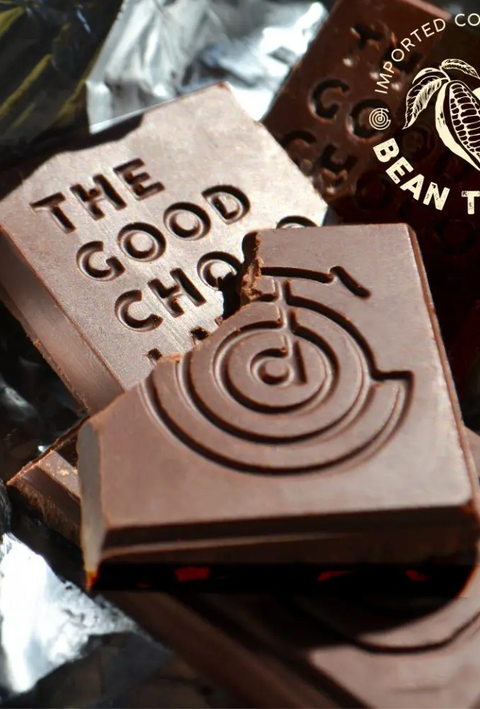
How Carbohydrates Fit Into Your Health
Ever since the 1980s, carbohydrates have been labeled as “unhealthy” and the “main source of weight gain”. The Atkins diet catalyzed a media frenzy that instilled the mentality that carbohydrate intake should be kept at a minimum. While there is merit and scientific evidence supporting these claims, it is important to remember that carbohydrates are essential to the human diet. How much carbohydrates you should be consuming each day is determined on a case by case basis, based on each person’s unique lifestyle.
The recommended carbohydrate intake of a body builder is going to differ from that of a working mother who may not have time to exercise regularly. Further, certain medical conditions, such as diabetes or obesity, can also dictate the amount of carbohydrates that is healthy for an individual to consume. At the end of the day, there is no set formula that works perfectly for everyone. Understanding your body and what makes you feel happy and energized is the key to building a healthy relationship with food.
What are carbohydrates?
The three main macronutrients, nutrients essential to our health and can only be obtained through diet, are proteins, fats, and carbohydrates. Carbohydrates are sugars, starches, and fiber found in all foods. They are important sources of fuel that our bodies break down into glucose and fructose, the building blocks of energy that power bodily functions.
Sugars
All carbohydrates are made up of sugars. At the basic level, sugars, also known as simple carbohydrates, are easily digested by the body. High amounts of sugars are found in numerous processed foods, such as candy bars and soft drinks. When ingesting food products like the former, the quick digestion sends glucose straight into your bloodstream, causing a spike in blood sugar levels. This results in a boost of energy, shortly followed by the infamous “sugar crash”, a state of fatigue induced by the swift depletion of energy. However, when sugars are consumed with high amounts of fiber or protein, your body is able to steadily absorb the sugars, providing you with a long lasting state of energy. This contrast in energy supply stems into the importance of differentiating refined sugars from natural sugars.
In a 2012 study on packaged foods in the U.S., it was found that roughly 75% of uniquely formulated foods contain added artificial sweeteners. These sweeteners are all a manifestation of refined sugars, which are commonly used by, and favored by, food production companies because it is cheap to process and widely accessible. As indicated by its name, refined sugars are the product of artificially manipulating and extracting natural sugars from foods like corn and sugarcane to produce a substance that can be easily used to enhance the taste of any food. While it is common knowledge that sugar is found in desserts such candy, soft drinks, and cookies, food companies have caught onto our preference for sweets and have added refined sugars wherever possible. Today, there are more than 61 different names for sugar found on food labels.
Common Names of Refined Sugars:
- High fructose corn syrup
- Sucrose
- Barley Malt
- Dextrose
- Maltose
- Brown Rice Syrup or Rice Syrup
Where Refined Sugars Can Be Hiding:
- Flavored Yogurts
- Cereals
- Pre-Made Oatmeal Packets
- Granola Bars
- Salad Dressing and Condiments
- Pasta Sauces
- Peanut Butter
Before the industrialization of food production and extraction, the main source of sugar was found in fruit. Because fruit contains high amounts of fiber, the naturally occurring sugars found in fruit does not induce a sugar crash. Likewise, there are great natural sugar alternatives that can satisfy your sweet tooth. Most natural sugars have a low glycemic index, a standardized metric that identifies how quickly a certain food will spike your blood sugar levels, a higher number indicating a quicker spike in blood sugar levels.
Natural Sugars With a Low Glycemic Index:
- Raw Honey
- Date Syrup
- Maple Syrup
- Blackstrap Molasses
Starches
Starches are complex carbohydrates that are composed of long chains of glucose. Also known as a storage carbohydrate, starches act as important sources of energy across all types of diets found between different cultures. Due to their complex structure, starchy foods are associated with a steady release of energy and increased satiety. Therefore, starchy foods are a great source of energy that also contains nutrients such as iron, calcium, and B vitamins.
Starchy Foods With High Nutritional Value:
- Beans and legumes (e.g. chickpeas, kidney beans, black beans, lentils)
- Whole Grains (e.g. quinoa, buckwheat, brown rice, oats)
- Whole Wheat Flour or Whole Wheat Pasta
- Winter Squash (e.g. butternut, acorn, pumpkin, kabocha)
- Root Vegetables (e.g. sweet potatoes, turnips, parsnips)
Unfortunately, similar to sugars, numerous foods today contain highly refined starches that are stripped of their nutrients. For example, refined grains are milled to remove the bran and germ, outer layers of grains that contain the bulk of its fiber and nutrients. This results in a similar flood of sugar into the bloodstream that occurs when ingesting foods high in refined sugars.
Refined Starchy Foods to Avoid:
- White Bread
- Refined Flour Products (e.g. crackers, pastas)
- Cereals
- White Rice
Fiber
Fiber is another type of complex carbohydrate that is known for improving the health of intestinal bacteria. Because it is technically “non-digestible”, it is utilized by the microorganisms found in our gut, which play a huge role in healthy digestion.
The two main types of fiber are insoluble and soluble fiber. Insoluble fiber helps bring water to the intestinal tract, which aids in regulating bowel movements. Soluble fiber helps reduce cholesterol levels while also easing bowel movements. Since fiber does not contribute any calories, foods high in fiber are also associated with weight loss.
Foods High in Fiber:
- Fruits and Vegetables
- Whole Grains
- Legumes
- Nuts and Seeds
Nuts and seeds are a great source of fiber.
Who Might Be Interested in a Low-Carb Diet?
Even though carbohydrates get a bad rap, some individuals may benefit from a low-carb diet. Namely, those who suffer from diabetes-related or obesity-related health conditions may be interested in doing so.
That being said, do not hesitate to reach out for help when inquiring about your own health. Before transitioning to a low-carb diet, it is in your best interest to consult a registered dietitian nutritionist and your medical professional to receive individualized guidance based on your lifestyle. It cannot be stressed enough how important it is to recognize how different everyone’s nutritional and dietary needs are, whether it be a preference or a restriction.
Diabetes
After your body breaks down the food you consumed into glucose, this sugar then enters your bloodstream. Subsequently, the rise in blood sugar levels communicates to your pancreas to release insulin. Insulin is a hormone that, when released, signals the body to absorb glucose for energy use. For those who suffer from diabetes, a chronic health condition, their body either doesn’t make insulin, also known as Type I Diabetes, or their body doesn’t use insulin well, also known as Type II Diabetes. If your body is unable to produce or recognize insulin, the prolonged presence of glucose in the bloodstream can lead to serious problems like heart disease and kidney disease.
The tried and true method to maintaining healthy blood sugar levels is through avoiding refined carbohydrates. A low-carb diet is not made to deprive you from healthy carbohydrates, such as naturally occurring starches and fiber. It is here to help you avoid foods that spike your blood sugar levels and leave you with empty calories. Unfortunately, those who suffer from diabetes are more sensitive to this.
Hypoglycemia
Those with Type I Diabetes may also experience hypoglycemia, also known as low blood sugar levels. This can be a result of taking too much insulin and/or not eating enough carbohydrates. While those with Type II Diabetes can experience hypoglycemia, it occurs more frequently for those with Type I Diabetes, who can’t produce insulin in the first place and may be eating a diet too low in carbohydrates.
In circumstances where someone is suffering from an intense episode of hypoglycemia, such as severe hunger or nausea, shakiness or clumsiness, and nervousness or anxiety, implement the “15-15 Rule”: provide the individual with 15 grams of fast acting carbohydrates. This is one of the few times where refined carbohydrates may be necessary.
Hypoglycemia can also occur in individuals who don’t have diabetes. After eating a large meal with a high sugar content, your body will trigger an influx of insulin, sometimes too much insulin, to address the skyrocketing blood sugar levels. Repeated occurrences of this cycle may lead to regularly producing too much insulin and increasing the risk of attributing hypoglycemia.
Obesity
As of 2016, roughly 71.6% of U.S. adults who are aged 20 years or older are either overweight or obese. This has drastically increased since 1988-1994, where 54.9% of U.S. adults who are aged 20 years or older were either overweight or obese. It is no secret that the rise in sugary foods and beverages has led to a global pandemic of obesity that affects both adults and children. A low-carb diet may help prevent and also mitigate obesity due to its avoidance of refined carbohydrates. By opting out of refined foods and snacks, you are essentially ridding your diet of all junk foods.
Even then, don’t be ashamed to treat yourself to your favorite candy or cakes every once in a while. As a general rule of thumb, eating sugary and processed foods in low to moderate amounts is the key to keeping you on track to maintain your healthy diet. Weaning yourself off of junk food is a marathon, not a sprint. Don’t feel discouraged by the occasional blip – we are all human and we all make mistakes.
In addition, there are now a multitude of healthy alternatives that are just as delicious as classic cookies or potato chips. As a matter of fact, you can find these healthy alternatives in Tastermonial’s Low-Carb Tasterbox.
How the Low-Carb Tasterbox Can Help
The Low-Carb Tasterbox is crafted to introduce you to exciting and delicious brands, all of which have less than 7g of carbohydrates per serving, helping you reach your health goals while enjoying tasty snacks. Enjoy 6+ premium low-carb and diabetic-friendly snacks delivered to your door. Of course, everything in our low-carb box is free of refined carbohydrates. Our team and certified dietitian ensures that the foods are good for you AND taste delicious, making them perfect for the whole family.
Each month, a new combination of groceries are placed into the Tasterboxes – the fun never ends. If you fall in love with a product from a previous box, you can also find them at the Tastermonial grocery store. This June, you can find good-for-you groceries from emerging Bay Area food brands such as Burma Love, Eat Makhana, The Good Chocolate, Garlic Goodness, Petit Pot, and Onya.
The Low-Carb Tasterbox is available now!
Tastermonial is here to help you on your health journey and we hope you enjoy the Low-Carb Tasterbox just as much as we enjoyed putting it together. Happy tasting!
Sign up for our newsletter to stay up-to-date with announcements, discounts, and exciting news!
Sources:
All about the Grains Group | ChooseMyPlate
Atkins Diet: What’s behind the claims?
Can gut bacteria improve your health? – Harvard Health
Carbohydrates: Types, Good vs Bad Carbs & Benefits
FastStats – Overweight Prevalence
High cholesterol – Symptoms and causes
Hypoglycemia (Low Blood Glucose) | ADA
Physiology, Carbohydrates – StatPearls
Protein, Carbohydrates, And Chronic Diseases – Eat for Life
This is what happens when everyone is terrified of carbs
Type 2 diabetes – Symptoms and causes
Use of caloric and non-caloric sweeteners in US consumer packaged foods, 2005–9
What is Insulin? – Important hormone allows your body to use sugar (glucose)
What’s the Difference between Natural and Refined Sugars?
The post How Carbohydrates Fit Into Your Health appeared first on Tastermonial.

